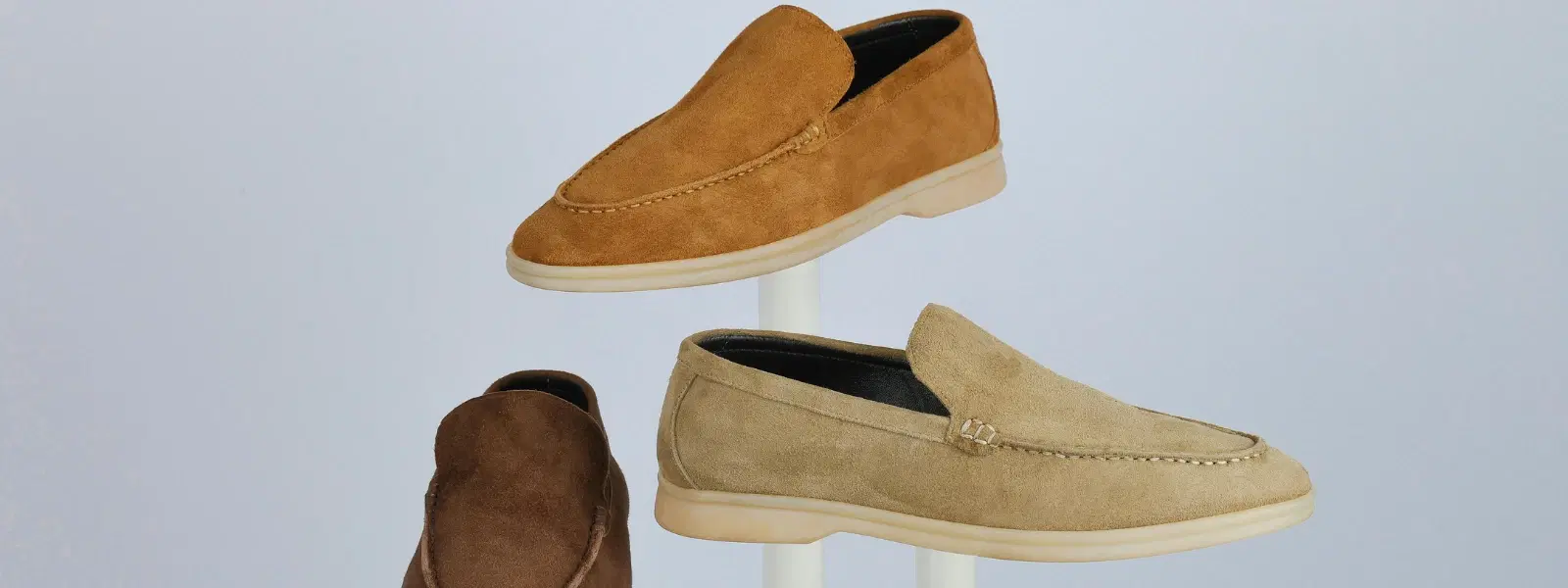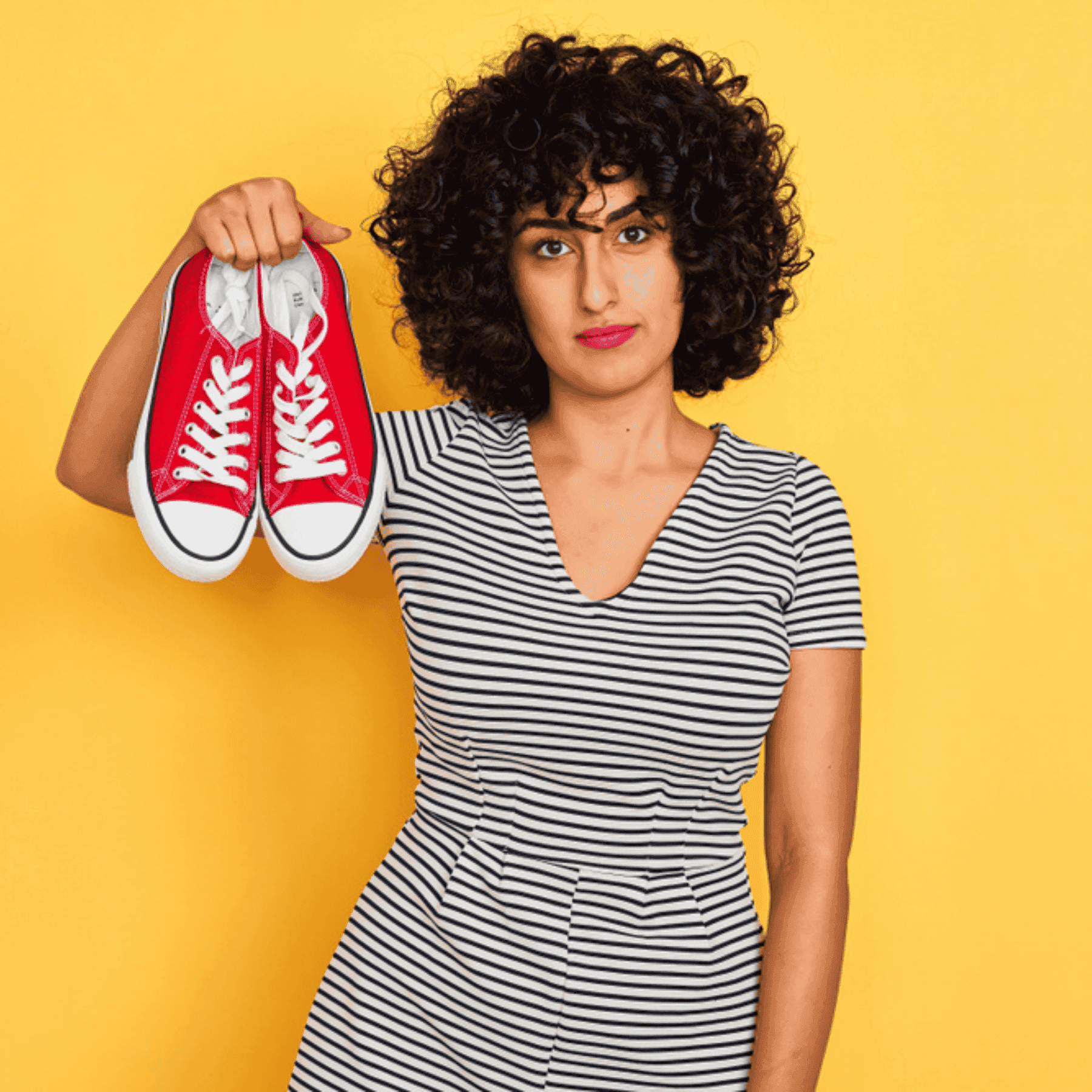
Footwear Guide
•04 min read

Shoe shopping and footwear buying may sound similar, but they involve different approaches. This blog post dives into what sets them apart. You will learn how mindset, choices, and priorities impact your footwear decisions. Whether you lean toward impulsive trends or careful planning, understanding these differences can lead you to more satisfying shoe choices.
Shoe Shopping Defined: Shoe shopping is often an impulsive experience guided by trends and aesthetics. Shoppers are attracted by visual appeal or the promise of a great deal. This style of shopping frequently focuses on the immediate allure of new designs, with less emphasis on factors like comfort or durability.
Footwear Buying Defined: In contrast, footwear buying is a thoughtful, need-based process. Buyers consider comfort, functionality, and the long-term benefits of the shoes. They weigh details such as materials and fit to find a pair that meets very specific requirements. Such an approach ensures that every purchase provides lasting value and comfort.
Key Differences: The main differences lie in the shopper's mindset, choice priorities, and the eventual outcomes. Shoe shopping leans toward casual browsing and short-term satisfaction, while footwear buying is characterized by intentional decision-making aimed at long-term utility. This conceptual understanding can be very helpful when navigating options like a casual footwear guide or stepping into a formal shoe selection process.
Choosing the right shoes starts with a purpose-based selection. Knowing the occasion or use is vital when determining which pair will work best. For everyday wear, comfortable shoes for daily use are crucial, while formal shoe selection tips stress the importance of style tempered with comfort. Building a wardrobe that includes both casual footwear for everyday errands and formal shoes for special occasions can boost your confidence and style quotient.
It is also important to understand the range of shoe types available. Types of footwear explained include sneakers for active lifestyles, boot designs for colder weather, and sandals for warm days. Breaking down these options not only makes your decision process smoother but also connects your choice to your personal style and lifestyle needs. Whether you are looking for stylish sneakers or a pair of refined formal shoes, aligning your needs with shoe shopping habits and footwear buying tips is essential.
Pro Tip: The Importance of Prioritizing Comfort
Comfort should never be compromised. Opt for shoes that offer support and cushioning for daily use. Making sure that your footwear not only fits well but also nurtures foot health can transform how you feel throughout the day.
Did You Know? Prioritizing Comfort Over Style
Many experts advocate for choosing comfortable shoes over purely trendy designs. This practice can prevent long-term foot issues such as bunions and plantar fasciitis. Look for shoes that offer adequate arch support and cushioning to keep your feet healthy, ensuring a happy stride every day.

In the realm of shoe shopping, trends and visual merchandising play significant roles. This approach often involves impulse buying, influenced by attractive marketing strategies and enticing discounts. However, this can sometimes lead to overlooking critical aspects like durability or proper fit. Using a reliable shoe size guide can mitigate such risks by ensuring that the chosen shoe conforms to your foot structure.
To avoid common pitfalls during shoe shopping, it is important to verify product quality by reading reviews and understanding the feedback from other shoppers. Remain cautious about promotions that force a hasty decision, and always confirm that the shoes are a comfortable and right fit. Buying decisions made in haste can sometimes undermine long-term satisfaction, making it essential to blend trend awareness with practical footwear buying tips.
When engaging in the process of footwear buying, informed decisions are the cornerstone of a satisfying purchase. Understanding the best materials for shoes—like leather, mesh, canvas, and specialized synthetics—is pivotal. Each material caters to different environmental and usage requirements. For instance, the durability of leather may be ideal for formal occasions, while breathable mesh is best suited for active, casual settings.
Shoe Fitting Tips are another cornerstone of a successful footwear buying experience. It is advisable to treat shoe fitting as a routine check; measuring your feet regularly is important since sizes can slightly differ with time. Additionally, trying on shoes at the end of the day, when your feet are naturally a bit swollen, can help assure that the fit is as comfortable and realistic as possible, ensuring your investment stands the test of daily use.
For those with active lifestyles, durability becomes a main priority when selecting shoes. The emphasis is on having reinforced soles that offer better traction and withstand extensive wear and tear. Breathable materials are also significant as they help minimize sweat and maintain shoe integrity during long periods of activity.
Consider these essential features when shopping for durable shoes for active lifestyles: a cushioned insole that supports shock absorption and a design tailored for movement. Running shoes with specialized foam midsoles, hiking boots with waterproof layers and ankle support, or versatile cross-training shoes are all designed to cater to multi-purpose activities. Such features ensure that your footwear is not only aesthetically pleasing but also robust and dependable.

Shoe shopping is often impulsive and trend-driven, while footwear buying is a deliberate process guided by comfort, durability, and specific needs.
Measure your feet and refer to the brand-specific shoe size guide. Ensure there’s adequate toe space and proper arch support.
Leather is durable, mesh is breathable, and synthetic textiles are typically lightweight. Choose materials based on your usage and weather conditions.
Yes, many formal shoes come with padded insoles and ergonomic designs that blend style with comfort.
Look for reinforced stitching, sturdy soles, and high-quality materials to ensure the shoe stands up to regular wear and tear.
Understanding the differences between shoe shopping and footwear buying paves the way for smarter footwear decisions. By aligning your purpose with the right style and being mindful of materials and fit, you can achieve both a stylish and functional footwear wardrobe. Whether you need casual options for everyday comfort or durable shoes for active lifestyles, a balanced approach that considers both trends and practical needs will always yield the best results.